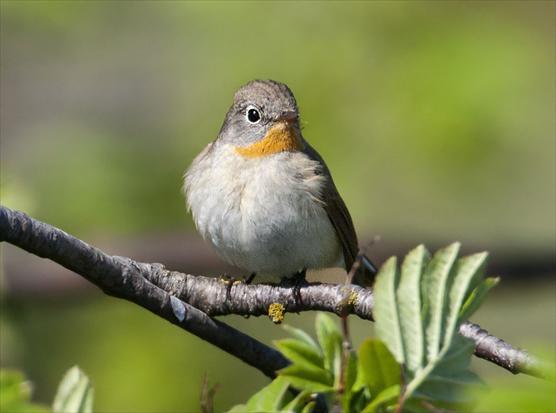Press release 2013-05-27 at 9:08

Red-breasted Flycatcher (Ficedula parva) lives in old forests that are in natural state. © Jorma Tenovuo
The existing network of nature conservation areas in Finland will be unable to ensure sufficient amount of habitats for our forest bird species as climate change progresses. The precious bird species of open mires and marshlands, on the other hand, will be better safeguarded by the network also in the years to come. These are the findings of a recent study conducted by the Finnish Environment Institute SYKE. The study is ground-breaking because it is one of the first to also take into account the habitat available for the species studied, in addition to studying the changes to areas that have favourable climatic conditions for the species.
Conservation needs of species change in line with the climate
According to the research results, Finland's nature conservation area network has sufficient capacity to safeguard those bird species of conservation concern living in open mire and marshland areas as climate change progresses. ”For forest bird species, the situation looks more worrying. At present, areas designated for nature conservation only contain a very small proportion of the habitats of forest bird species. This means that Finnish forest bird species are at risk”, explains Raimo Virkkala, Leading Researcher, SYKE.
A network of nature conservation areas is one of the key methods for preserving the diversity of species as climate change progresses. Due to global warming, species ranges move towards the north, causing changes to the conservation status of species.
Northern species at risk of extinction
Finland's largest forest conservation areas are located in the northern boreal zone in Northern Lapland. Based on the study, the significance of the conservation area network in preserving forest bird species in the northern boreal zone varies according to which climate scenario is used in foresight. The stronger the impact of climate change, the better the network will be able to safeguard forest bird species. This is possible because more and more southern species can move to the vast conservation areas of Northern Lapland. On the other hand, if the climate becomes much warmer in the future, northern species have the highest risk of extinction.
The study evaluated the coverage of Finland's nature conservation area network from the perspective of bird species of nature conservation concern in light of three climate scenarios, which all extend close to the end of the century but have different levels of impact. One hundred bird species of conservation concern living in forests, open mires, marshlands and Arctic mountain habitats were included in the study, the distribution areas of which were predicted for the period 2051-2080 on the basis of different climate scenarios.
The study was conducted as part of the research project A-LA-CARTE (Assessing limits of adaptation to climate change and opportunities for resilience to be enhanced), implemented under the Academy of Finland's FICCA research programme on climate change.
Additional information
Leading Researcher, Docent Raimo Virkkala, Finnish Environment Institute,
firstname.lastname@ymparisto.fi, Tel. +358 400 148 668